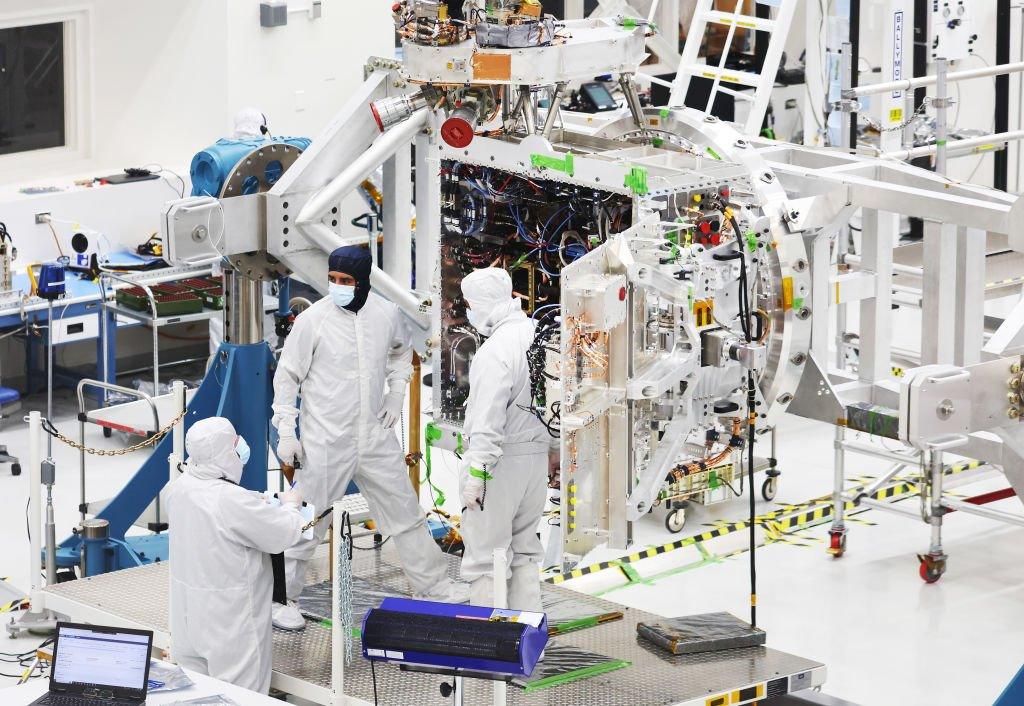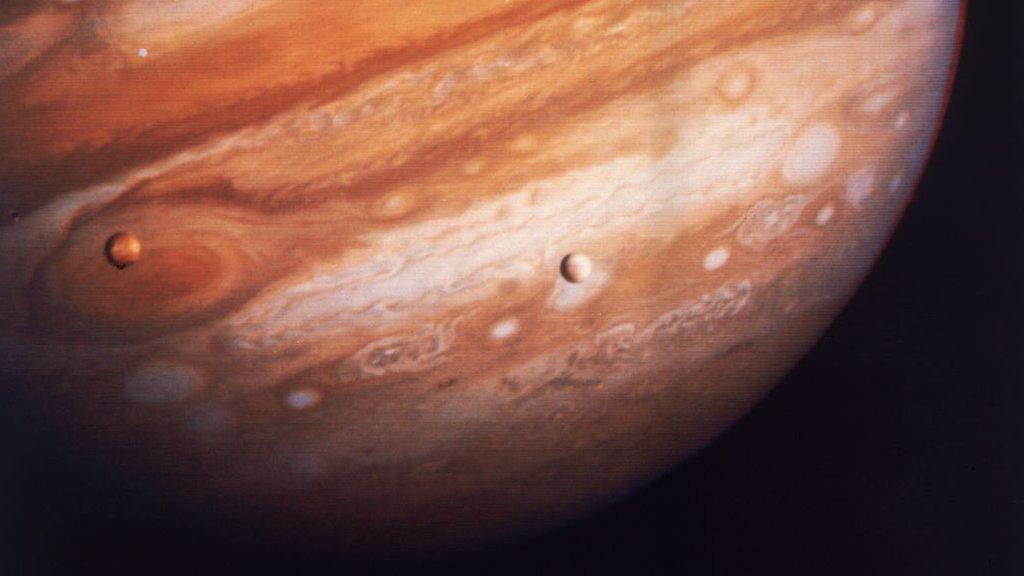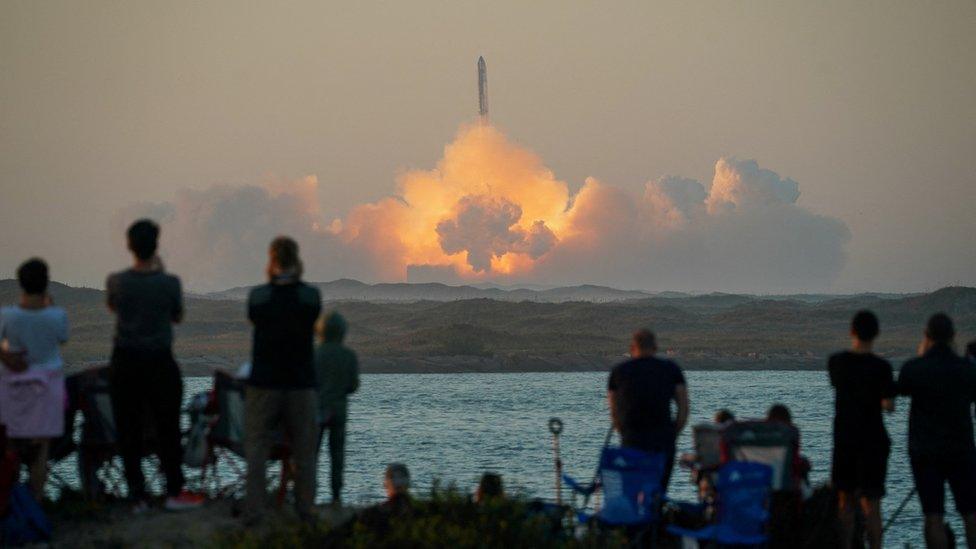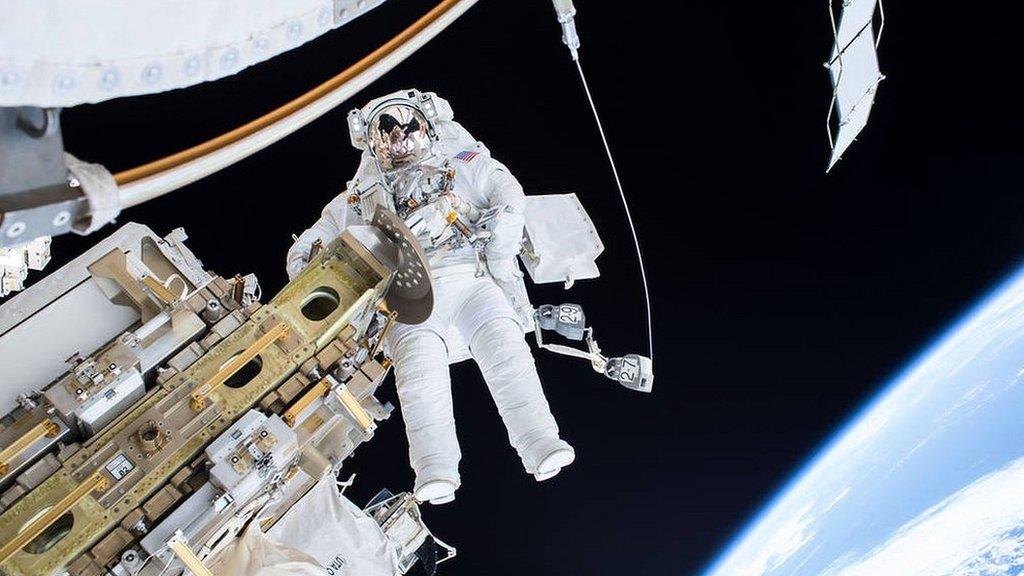Europa Clipper: Nasa wants you to send your name on a mission to Jupiter
- Published
- comments

How would you like to see your name written in the stars?
Well, Nasa is asking people to send in their names so they can be blasted off on a space mission, deep into our galaxy.
The US space agency's 'Message in a Bottle' campaign wants to give people the chance to have their name stencilled onto a microchip which will ride on the Europa Clipper spacecraft, past Mars, and all the way to Jupiter and its moon, Europa.
So far, about 700,000 names have been submitted and the deadline is New Years Eve, 31 December 2023.

The Europa Clipper mission is aiming to see if Europa could have life under its surface
Scientists and technicians working in the Microdevices Laboratory at NASA's in California are planning to gather all the names that have been sent in.
Then they will use a electron beam to engrave them onto a tiny microchip smaller than a 5 pence coin.
Each line of text will be smaller than 1/1000th the width of a human hair (75 nanometres).

Nasa scientists are still building the Europa Clipper ship
The names and the microchip will then ride on the outside of the spacecraft as it travels 1.8 billion miles (2.6 billion kilometres) to the icy moon, Europa, which experts believe has an ocean under its frozen crust.
The scientific goal of the Europa Clipper mission is to find out if there are places below the surface that could support life.
It aims to work out the thickness of the moon's icy shell and investigate what it is made of.

You can just about see Europa in the centre-right of this image - Jupiter is A LOT bigger!
The detailed exploration of Europa will help scientists understand the potential for habitable worlds beyond our planet.
The spacecraft will make about 50 close flybys of the moon, and will fly half a billion miles (800 million kilometres) as it gathers info on Europa's subsurface ocean, icy crust, and atmosphere to determine if the moon could have lifeforms on it.
- Published19 November 2023

- Published7 January 2016

- Published17 November 2023

